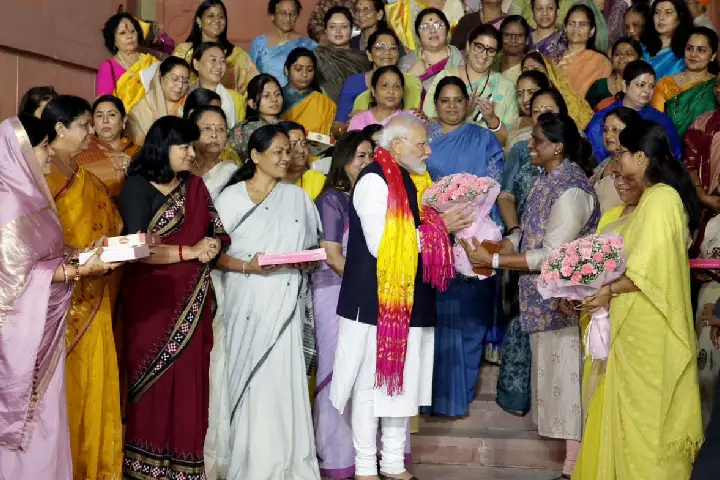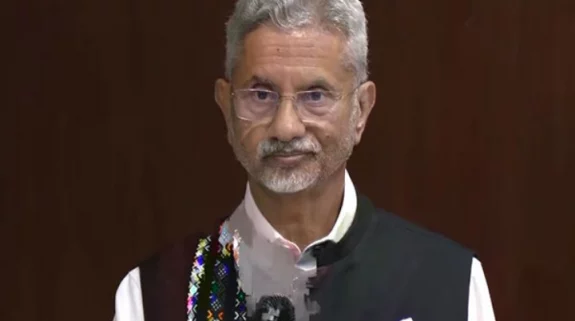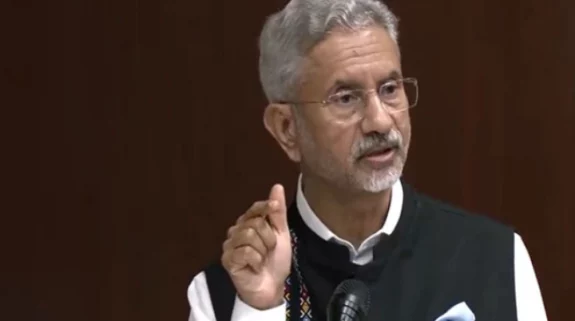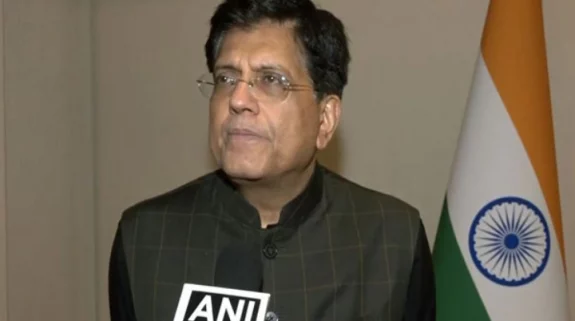The passage of The Women’s Reservation Bill proposes to reserve 33 per cent of seats in the Lok Sabha (Lower House of Parliament) and State Legislative Assemblies for women has put India in the league of gender advocate nations. Majority of such nations, as reported earlier by India Narrative, are from the Global South where countries are poor and developing.
The passage of the bill is testimony to India’s commitment to women-led development, for which it mobilised global support during its G20 Presidency this year.
Calling it a “bold” and “transformative” step, Susan Ferguson, Country Representative of UN Women India, underlined the importance of political representation for women’s sustained empowerment, while hoping that the proposed Bill will be endorsed by all stakeholders, including Members of Parliament and civil society.
We applaud India's passage of the Women’s Reservation Bill on September 18 as a landmark moment for gender equality. This is a testimony to India’s commitment to women-led development! Read more here: https://t.co/sXUrwxOsoz@kantasingh_ @UNinIndia @unwomenasia @MinistryWCD
— UN Women India (@unwomenindia) September 20, 2023
“We hope political parties across the board will come together to ensure timely implementation of the Bill given that gender quotas in policies and politics is crucial to advancing gender equality and women’s rights. The Women’s Reservation Bill strengthens India’s commitment to women-led development and sets a global example,” Ms. Ferguson said in a statement. “This is a moment of great elation for gender advocates and organisations that work for gender equality, women’s economic empowerment and their increased role in leadership position.”
India has already reserved one-third of seats for women in Panchayati Raj Institutions at the village level and one-third of the offices of the chairperson at all levels of the Panchayati Raj Institutions, and in urban local bodies, respectively.
Studies about the impact of women in leadership positions have shown the positive effect of reservation on delivering policies, programmes and financing that improves the lives of women and their families, communities, and ultimately their nations.
This quota reserving 33% seats for women will leapfrog India into one of 64 countries around the world who have reserved seats for women in their national Parliaments, proponents of women rights hope. Typically, achieving a critical mass of 30 per cent representation by women in Parliament is known to yield positive outcomes for women’s empowerment. However, we hope that implementing such reservations will ultimately lead to achieving 50 per cent representation of women in Parliaments across the globe.
Globally, women currently occupy only 26.7% of parliamentary seats and 35.5% of local government positions.
Countries with women-dominated Parliaments
Out in front is Rwanda, where women hold more than 60% of seats and which in 2008 became the first country to have a female-majority Parliament. Women also outnumber men in Cuba (53%) and Nicaragua (52%).
. @RURA_RWANDA yitabye PAC itanga ibisobanuro ku makosa yagaragajwe n’Umugenzuzi Mukuru yiganjemo cyane ibibazo byagaragaye muri gutwara abantu mu buryo rusange birimo abatega bamara igihe ku mirongo, ibibazo muri biciro by’ingendo n’ibibazo bya mubazi za moto. pic.twitter.com/6eaHnajmw9
— Rwanda Parliament (@RwandaParliamnt) September 21, 2023
New Zealand, Mexico and the United Arab Emirates have an even gender split, while Iceland, Costa Rica, Sweden and South Africa are not far off.
The UAE did not have any women in its Federal National Council before 2006, but achieved gender parity in 2019 following a presidential decree.
Women heads of state, cabinet ministers
As of 1 January 2023, there were 31 countries where 34 women serve as Heads of State and/or Government. At the current rate, gender equality in the highest positions of power will not be reached for another 130 years.
Just 17 countries have a woman Head of State, and 19 countries have a woman Head of Government.
First-time compiled data by UN Women show that women represent 22.8 per cent of Cabinet members heading Ministries, leading a policy area as of 1 January 2023. There are only 13 countries in which women hold 50 per cent or more of the positions of Cabinet Ministers leading policy areas.
The five most commonly held portfolios by women Cabinet Ministers are Women and gender equality, followed by Family and children affairs, Social inclusion and development, Social protection and social security, and Indigenous and minority affairs.
We ensured a minimum of 33 percent reservation for women in local bodies’ elections. What is more, in a pleasant co-incidence, a proposal to provide similar reservation for women in the state assemblies and national Parliament, is taking a shape now. It will be the most… pic.twitter.com/AFgsdCv7y0
— President of India (@rashtrapatibhvn) September 20, 2023
36% of women in leadership positions in India
The global ranking of women in senior leadership roles has improved as a result of outstanding regional performances in 2023. The percentage of women in senior management across all regions – including Africa, APAC, ASEAN, Latin America, North America, and the EU – has surpassed 30% for the first time in history.
The largest percentage point gain was seen in the ASEAN region, where women make up 40% of senior management roles in 2023, up from 37% in 2022.
Latin America saw an increase of 2 per cent point, from 35% to 37%, while the European Union’s performance remained flat at 33%.
In late 2022, APAC overtook North America for the first time since 2018 in terms of women in senior management roles. The percentage of women in APAC climbed from 30% to 32% in four years. India undoubtedly plays a significant role in promoting gender diversity in the workplace.
North America, on the other hand, was the only region to experience a decline, from 33% to 31%.
Country-wise, India is leading with 36% of women in leadership positions, surpassing the current global average of 32%, the BRICS average of 34%, and the International Group of Seven (G7) average of 30%.
Jaya Verma Sinha assumes charge as the Chairman and CEO of the Railway Board. She is the first woman to hold this position in the 166-year history of Indian Railways, as well as the 166-year history of the Railway Board. pic.twitter.com/w2GfHjswT2
— ANI (@ANI) September 1, 2023
However, the picture is less than rosy when it comes to job roles like Sales. LinkedIn recently revealed that women make up only 19% of the overall sales workforce in India. Out of these, only 13% held senior positions.
Grant Thornton’s report also indicates that companies that provide options such as hybrid, flexible, or remote work arrangements tend to have greater success in promoting women to senior management positions.
A majority (53%) of mid-market businesses worldwide have adopted a hybrid approach to work, while 36% of companies strictly follow the work-from-office culture.
Although the proportion of women holding senior leadership roles has slightly increased in 2023, there has been a significant rise in the number of women taking on the roles of CEO, MD, and CIO.
The percentage of women holding CEO/MD positions worldwide has increased from 15% in 2019 to 28% in 2023. Female CIO (Chief Information Officer) positions also rose from 16% to 23% during the same period.
Currently, a whopping 40% of women working in global companies are HR Directors, 38% are CFOs (Chief Financial Officers), 25% are CMOs (Chief Marketing Officers) and 25% are COOs (Chief Operating Officers).
Also Read: Global South leads world in sending women to Parliament




















